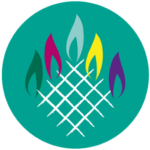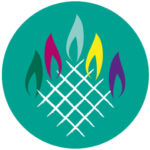Introduction
Art is studied by all students in year 7 and 9 on a rotation with students in year 8 having 1 hour a week. Students can choose to study Art and Design in year 10 and 11, as one of their GCSE option choices.
Our purpose in Art and Design is to create independent learners through the development of key skills and knowledge. Students will expand their enquiry skills through problem solving to ensure they have a creative outlet to enhance their lives and opportunities.
We will highlight transferable skills from Art and Design to other subjects, careers and life experiences so students achieve their life goals. This will enable students to evolve and maintain the importance of collaboration with others in learning, we wish to cultivate a love of lifelong learning for art and design.
The sequencing allows students to explore the main thread of skills and knowledge outlined in the national curriculum at KS3 and KS4 and some which we feel will benefit our students as life skills. Each topic studied in art incorporates social and historical context so that students can learn to appreciate and understand its significance in history and culture.
As a department, we use a variety of pedagogical and subject specific approaches to teaching and learning and students’ work is assessed throughout their learning journey. Each assessment provides students with the knowledge they need to develop their work further and provides them with the opportunity to present their ideas through discussion, practical application, annotation, self and peer assessment.
Throughout Key Stage 3 and 4, we aim to engage, inspire and challenge students, equipping them with the knowledge and skills to experiment and create their own works of art. We teach students to start thinking critically in order to develop a more rigorous understanding of art and design. Our lessons, therefore, aim to embed key skills and techniques, recording ideas and observations as a basis for exploring ideas. Students will be taught to use a range of techniques and processes to record their observations, which will be assessed throughout the curriculum at increasingly advanced levels and with new content. Students will increase their proficiency in the handling of different materials and will learn to evaluate their work and the work of others.
‘Action is the foundational key to all success’, Pablo Picasso
KS3
Yr 7- colour explosion
We build upon the prior learning of our students from KS2 by further developing the ‘Formal Elements of Art and Design’. The scheme for our year 7 students has a particular focus on colour, tone, shape and form and is dedicated to embedding core knowledge of art and design practice as well as growing knowledge of current and past art practitioners. Students will look at the work of 2 iconic Spanish artists – Okuda San Miguel and Picasso. They will be examining the themes and iconography behind their work before analysing and evaluating specific pieces and using this to create a personal and meaningful response whilst utilising the differing mediums used by the artists.
Yr 8 – Project 1 – Pick and Mix
Embedding the formal elements further, students will develop their still life drawing skills and textiles skills by researching and creating work by the artists Sarah Graham and Lucy Sparrow. Year 8 pupils will be combining areas covered traditionally in art at KS3 with more challenging materials by creating textiles pieces.
Project 2- Day of the Dead
Students will explore different cultures through art, looking specifically at the Mexican holiday ‘Day of the Dead’. They will research the traditions surrounding the celebration and artists connected to it. Leading into a final clay sculpture piece. This project will continue to encompass the skills and knowledge we are building in our students by revisiting and recalling the basic skills and staking them to a more advanced stage.
Yr 9- surrealism
Students in year 9 will look at the work of surrealist artists past and present, this will be utilised to inspire their own stylised design.
The concept of surrealism will challenge students who have primarily been working in realism, with some stylised elements in their art education so far.
Students will have more freedom with this project in both the style of image and materials they can use.
KS4
Art and design follows the Eduqas GCSE Art And Design Specification. The focus of the specification is to nurture an enthusiasm for Art and Design through a broad introductory foundation programme, to develop critical, practical and theoretical skills that enable students to gain a holistic understanding of a range of practices and contexts in the visual arts, crafts and design fields.
The specification is designed to provide engaging, challenging, coherent and meaningful learning experiences through a flexible structure that supports the development of creative practice. The programme of study broadens experience, develops imagination and technical skills, fosters creativity and promotes personal and social development.
The course consists of:
Unit 1: Portfolio of Work (Controlled Assessment) 60%
Unit 2: Externally Set Task 40%
Criteria required for the course
Core Skills:
- A01 – Developing ideas through investigation
- A02 – Experimenting and refining ideas using different media
- A03 – Primary and secondary observations and annotations
- A04 – Final response and outcome
Yr 10
Students will engage in a variety of experiences and exploration of a range of media, techniques and processes, including both traditional and new technologies. These developmental pieces will culminate in a project based on portraiture.
Students will explore the works of a range of artists, examples of which will be used within the investigation and making process. Responses to these examples will be shown through practical experimental work in 2D and 3D materials.
Preparation for students’ mock exam piece that will contribute towards 60% of final GCSE Grade .
Using a past paper, Students will choose just one of 15 assignments.
- 5 assignments based on themes
- 5 assignments based on visual stimuli
- 5 assignments based on written briefs.
We’ll then work through a portfolio structure covering each AO thoroughly. Each student will personalise their project and responses.
Yr 11
Continuation of the mock portfolio piece started before the summer break culminating in a 10 hour exam at the end of the first half term.
Students will select their strongest project to develop further in the Autumn term. Unit 1: Portfolio of Work (Controlled Assessment) 60%
Spring term Unit 2: Externally Set Task 40%
Delivery of exam paper and preparation period. Students will select one of 15 question start points and develop work based on their chosen theme. Culminating in self-sustained final piece(s) created in Exam conditions.
The task will include:
- AO1: Independent artist research
- AO2: Independent idea development, experimentation of media and processes, refining skills and techniques
- AO3: Observational recording of primary and secondary sources, including photography, annotation of ideas
- AO4: Final formal 10-hour practical exam
Careers
Here are some of the job roles that people with a background in art and/or design can pursue:
- Photojournalist
- Fine Art Photographer
- Commercial/Industrial Photographer
- Studio/Portrait Photographer
- Freelance Photographer
- Portrait Photographer
- Commercial Photographer
- Scientific Photographer
- Photojournalist/News Photographer
- Freelance Photographer
- Interior Designer
- Art Director, Fashion Designer
- Game Designer,
- Architect
- Industrial Designer
- Art Gallery Dealer
- Art Teacher.
- Meet The Committee Team
- Learning Journey



